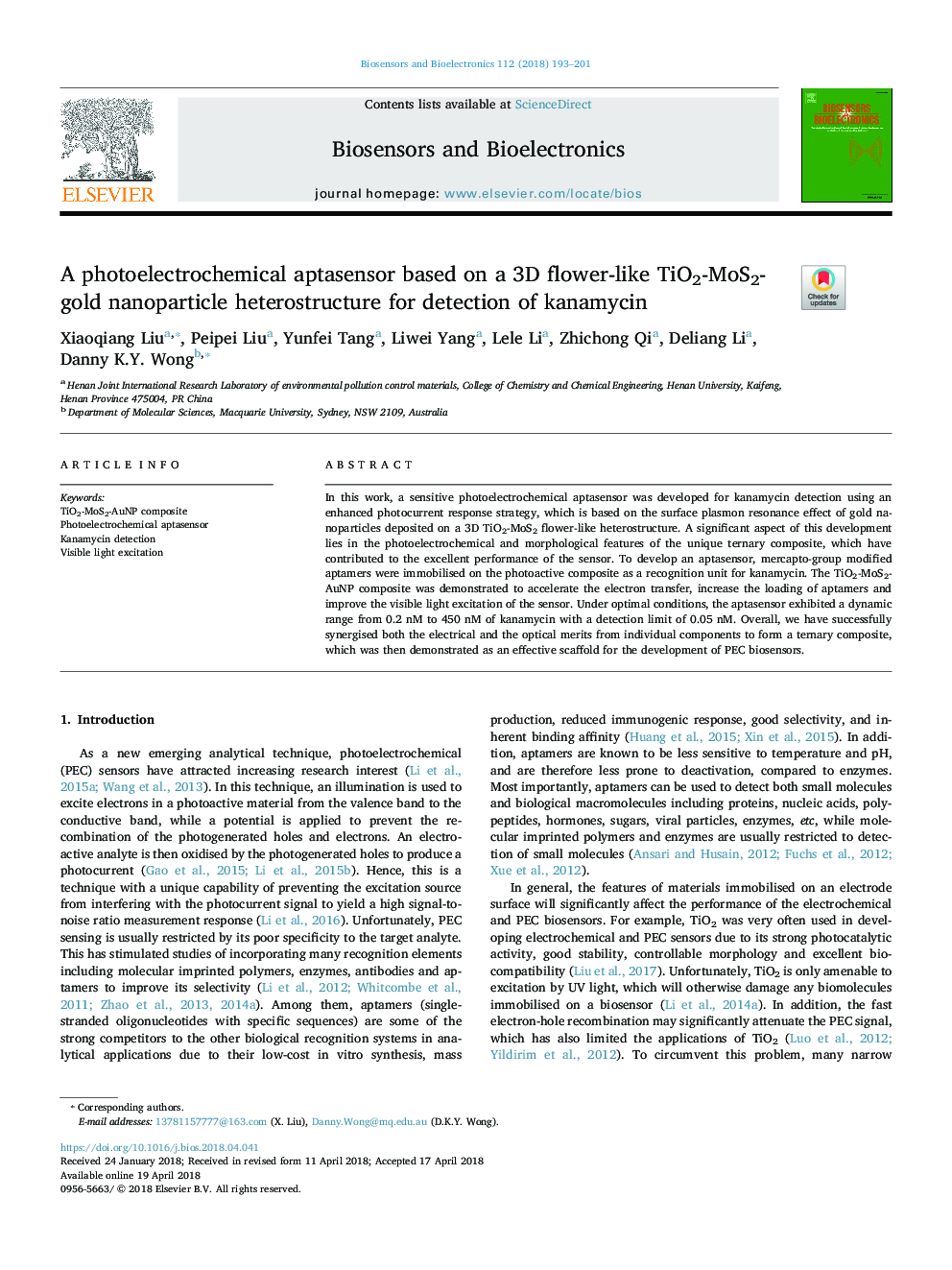| Article ID | Journal | Published Year | Pages | File Type |
|---|---|---|---|---|
| 7229299 | Biosensors and Bioelectronics | 2018 | 9 Pages |
Abstract
In this work, a sensitive photoelectrochemical aptasensor was developed for kanamycin detection using an enhanced photocurrent response strategy, which is based on the surface plasmon resonance effect of gold nanoparticles deposited on a 3D TiO2-MoS2 flower-like heterostructure. A significant aspect of this development lies in the photoelectrochemical and morphological features of the unique ternary composite, which have contributed to the excellent performance of the sensor. To develop an aptasensor, mercapto-group modified aptamers were immobilised on the photoactive composite as a recognition unit for kanamycin. The TiO2-MoS2-AuNP composite was demonstrated to accelerate the electron transfer, increase the loading of aptamers and improve the visible light excitation of the sensor. Under optimal conditions, the aptasensor exhibited a dynamic range from 0.2 nM to 450 nM of kanamycin with a detection limit of 0.05 nM. Overall, we have successfully synergised both the electrical and the optical merits from individual components to form a ternary composite, which was then demonstrated as an effective scaffold for the development of PEC biosensors.
Related Topics
Physical Sciences and Engineering
Chemistry
Analytical Chemistry
Authors
Xiaoqiang Liu, Peipei Liu, Yunfei Tang, Liwei Yang, Lele Li, Zhichong Qi, Deliang Li, Danny K.Y. Wong,
